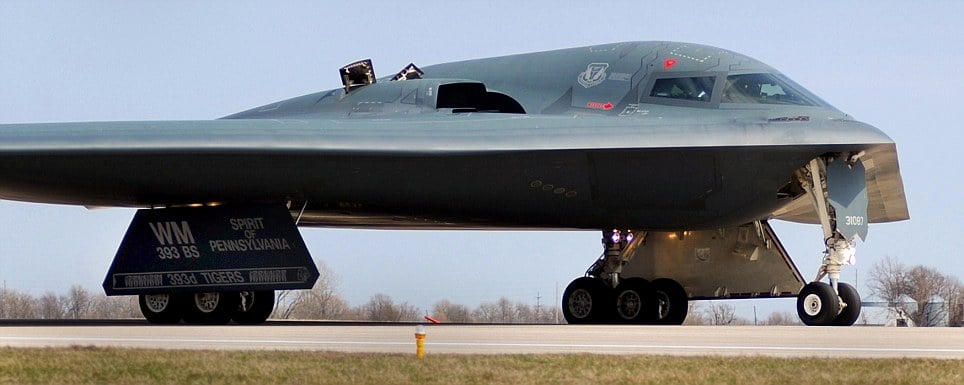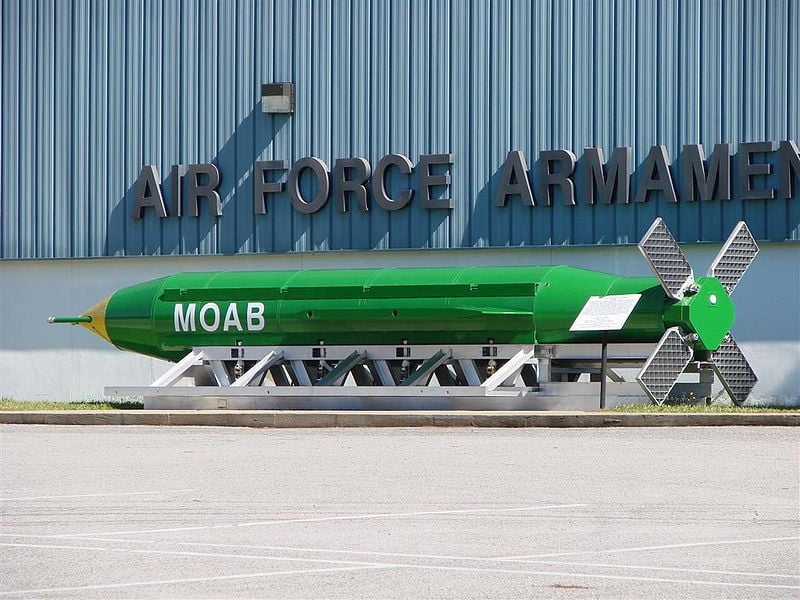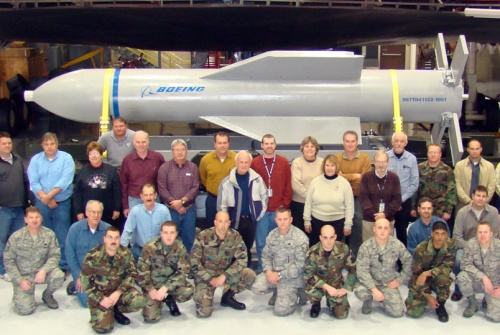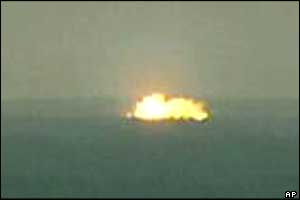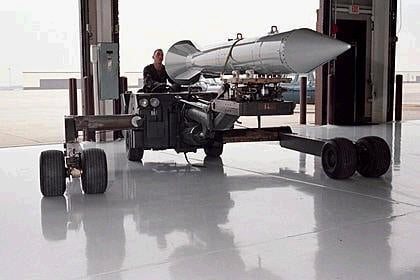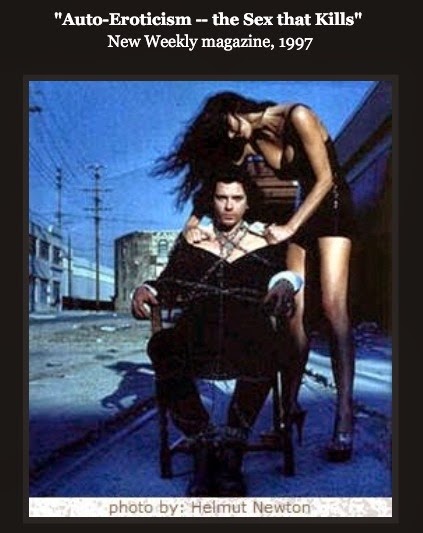The Covert War in Yemen – 1962-70
In September 1962, the Imam of North Yemen was overthrown in a popular coup. Imam al-Badr had been in power for only a week having succeeded his father who had presided over a feudal kingdom where 80 per cent of the population lived as peasants and which was controlled through bribery, an arbitrary and coercive tax system and a policy of divide and rule. The coup was led by Colonel Abdullah al-Sallal and a pro-Nasser, Arab nationalist group within the Yemeni military, which proclaimed the Yemen Arab Republic. The Royalist forces supporting the Imam took to the hills and began an insurgency, supported by Saudi Arabia and Jordan, against the new Republican regime, while Nasser’s Egypt deployed troops in North Yemen to shore up the new Republican government.
Britain soon resorted to covert action to undermine the new Republican regime, in alliance with the Saudis and Jordanis. The declassified files are interesting in showing that British officials were completely aware that they were – by any standards of moral behaviour, which were irrelevant to British planners in this case as in others – supporting the ‘wrong’ side. For example, Christopher Gandy, who was Britain’s top official in Taiz in North Yemen and Britain’s top official there, noted shortly after the revolution that the rule of the previous Imam ‘has made the Imamate unpopular with large elements and those in many ways the best’. The ‘monopoly of power’ was ‘much resented’ and was exploited by the new, Republican government by appointing into office people from ‘classes, regions and sects previously neglected in the distribution of power’. Gandy described the Imam’s rule as ‘an arbitrary autocracy’ while the Republicans were acting collectively through a new government, and were ‘much more open to contact and reasoned argument’. Gandy actually recommended recognition of the new Yemeni regime, saying that it was interested in friendly relations with Britain and that this was ‘the best way to prevent an increase’ in Egyptian influence. But he was overruled both by his political masters in London and by officials in neighbouring Aden, Britain’s then colony. One of Gandy’s arguments was that if the Royalists were to restore themselves in power they would now have to make themselves popular, which would ‘in its turn embarrass us in Aden and the Protectorate’ – where Britain was supporting similarly feudal elements against strong popular, nationalist feeling.
After Britain’s covert campaign in Yemen was well under way, an official in the Prime Minister’s office noted that Egyptian President Nasser had been:
‘… able to capture most of the dynamic and modern forces in the area while we have been left, by our own choice, backing the forces which are not merely reactionary (that would not matter so much) but shifty, unreliable and treacherous’.
Prime Minister Harold Macmillan himself admitted that it was:
‘repugnant to political equity and prudence alike that we should so often appear to be supporting out-of-date and despotic regimes and to be opposing the growth of modern and more democratic forms of government’.
The Foreign Secretary, Alec Douglas-Home, also conceded that
w
... the Republicans’ ‘attraction for the average Yemeni will be greater’ than the Imams’, and this would ’cause us a great deal of trouble’.
Against the irrelevances of popular, more democratic elements were set the important virtues of British Interests, in fact imperial policy. The big issue was retaining the military base at Aden. This was the cornerstone of British military policy in the Gulf region, in which Britain was then the major power, directly controlling the sheikhdoms of the Persian Gulf and with huge oil interests in Kuwait and elsewhere. The coastal city of Aden was surrounded by what Britain had forged into a ‘protectorate’ of the Federation of South Arabia, a set of feudal fiefdoms presided over by autocratic leaders similar to that just overthrown in Yemen, and kept sweet by British bribes.
It was feared that a progressive, republican, Arab nationalist Yemen would serve as an example to the feudal sheikhdoms throughout the Gulf and the wider Middle East as well as in Aden itself. Foreign Secretary Douglas-Home stated shortly after the Republican coup that Aden could not be secure from ‘a firmly established republican regime in Yemen’. A ministerial meeting similarly concluded that if Britain were forced out of Aden it would be ‘a devastating blow to our prestige and authority’ in the region. Even to recognise the new Yemeni regime might lead to ‘a collapse in the morale of the pro-British rulers of the protectorate’, putting ‘the whole British position in the area… in jeopardy’.
The threat, as outlined by Sir Kennedy Trevaskis, the High Commissioner in Aden, was that the Yemeni republicans ‘could expect to win massive support in both’ Aden and the federation where ‘pro-Republican feeling is strong’. The Republican regime was likely to encourage ‘some of our own friends among the rulers’ in the protectorate to ‘defect and come to terms with the Yemen government’. ‘Many would be attracted by’ the regime, Trevaskis noted.
These concerns were shared by the arch-mediaeval kingdom in the region, Saudi Arabia, which feared the spread of the overthrow of monarchies by Arab nationalist forces. It was recognised by British planners that after the Saudis had begun arming the Royalists in Yemen they ‘were not greatly concerned about the form of government to be established in the Yemen, provided that it was not under the control of’ Egypt – any other government would do.
This threat heightened as Nasser and new Yemeni leader al-Sallal gave diplomatic and material support to anti-British republican forces in Aden and the federation and conducted a public campaign urging the British to withdraw from their imperial possessions. One reason for this was that Britain was conspiring from the federation to undermine the new Yemeni government. Interestingly, Trevaskis also noted that if the Yemenis were to secure control of Aden ‘it would for the first time provide the Yemen with a large modern town and a port of international consequence’. Most importantly, ‘economically, it would offer the greatest advantages to so poor and ill developed a country’ – a consideration, though, which was again an irrelevance in planning.
So Britain decided to engage in a covert campaign to promote those forces recognised as ‘shifty’, ‘treacherous’ and ‘despotic’ to undermine those recognised as ‘popular’ and ‘more democratic’ in order to ensure that the threat of the former did not spread. Crucially, they did so in the knowledge that their clients did not stand a chance of winning. The campaign was undertaken simply to cause trouble for the Republicans, and the Egyptians, in Yemen, while they were known to hold the overwhelming majority of the country and the centres of population.
The Yemenis were simply unpeople, a tool to be used in British strategy – similar, therefore, to the Kurds of Iraq used to pressure regimes in Baghdad and the dissident colonels in Indonesia secretly supported by Britain in the 1950s to destabilise the government in Jakarta. The files are crystal clear on this point. Harold Macmillan noted in February 1963 that ‘in the longer term a republican victory was inevitable’. He told President Kennedy that:
‘I quite realise that the Loyalists [sic] will probably not win in Yemen in the end but it would not suit us too badly if the new Yemeni regime were occupied with their own internal affairs during the next few years’.
What Britain wanted, therefore, was ‘a weak government in Yemen not able to make trouble’. A note to the Prime Minister similarly states that:
‘All departments appear to be agreed that the present stalemate in the Yemen, with the Republicans and Royalists fighting each other and therefore having no time or energy left over to make trouble for us in Aden, suits our own interests very well’.
The Prime Minister’s foreign policy adviser, Philip de Zulueta, noted that ‘our interest is surely to have the maximum confusion in the tribal areas on the Aden frontier’ with Yemen.
The covert campaign
Piecing together a brief chronology of British covert action is difficult in light of the wide censorship of the files. But the task is aided by MI6 expert, Stephen Dorril’s analysis in his comprehensive book, MI6, produced mainly from secondary sources and interviews, an analysis that provides an excellent antidote to the silence of the academics.
Shortly after the September 1962 coup Jordan’s King Hussein visited London where he met Air Minister Julian Amery and urged the British government not to recognise the new Yemeni regime. They both agreed that MI6 asset Neil ‘Billy’ McLean, a serving Conservative MP, tour the area and report back to the Prime Minister. MI6's former vice chief, George Young, now a banker with Kleinwort Benson, was approached by Mossad to find a Briton acceptable to the Saudis to run a guerilla war against the republicans. Young then introduced McLean to Dan Hiram, the Israeli defence attache who promised to supply arms, money and training, which the Saudis eagerly grasped.
Two days after the coup Price Hassan, uncle of Iman al-Badr, who had been in New York for the past several years, called on Douglas-Home for help to get him to the Yemeni frontier where he would make a bid for power. The files indicate that British officials could not provide any overt help but by mid-October Hassan is reported to have ‘plenty of money and arms’.
In October Britain also considered direct military intervention in Yemen when Prime Minister Macmillan called on the Chiefs of Staff ‘to consider our military resources should we be driven to adopt an overt policy’. Covert operations were decided on instead, perhaps for the reason later given by Foreign Secretary Rab Butler, who wrote that ‘if this had happened a generation ago’, we should have used ‘North-West frontier’ tactics ‘which would probably have been effective’. Unfortunately, ‘there are severe limitations on the use of such methods in the world as it is today, and we trust that any repetition can be avoided’.
In October McLean visited Saudi Arabia as a personal guest of the King, who called on Britain to provide aid to the Royalists, especially ‘air support… if possible openly, but if this is not possible, then clandestinely’. McLean also visited Yemen to meet with the Royalists, including Prince Hassan at his headquarters, to assess the situation and delivered a report of his visit to Defence Minister Peter Thorneycroft. By early November, Saudi arms and money were flowing to the Royalists and by mid-November the Foreign Office had produced a policy paper outlining the options open to the government, including covert aid.
In early December, McLean again visited Yemen and the Imam’s forces who informed him of the need for arms and ammunition. On returning to London, McLean met the Foreign Secretary, urged British aid and began canvassing the Cabinet for support. McLean was carrying a letter from al-Badr to the Prime Minister asking for support to the Royalists who were disappointed with the lack of aid so far forthcoming from Britain. At the same time, the High Commissioner in Aden said that ‘we ought now to be considering definite steps to reinsure ourselves with’ the Royalists.
When the British ambassador to Egypt, Sir Harold Beeley, met Egyptian President Nasser’s personal adviser, Mohammed Heikal, the latter accused Britain of several aspects of involvement in the fighting in Yemen, notably supplying fighter aircraft to Jordan after the outbreak of the fighting for use in Yemen. Heikal told Beeley that McLean was advising the Royalists, that he had visited the Kings of Saudi Arabia and Jordan, both of whom were now intervening in Yemen. He also said that the Jordanian Air Force Commander who had defected to Egypt ‘asserted that his orders, which involved attacking targets in the Yemen, had been given to him personally by King Hussein in the presence of a British Air Advisor’.
Foreign Secretary Douglas-Home was initially against backing the Royalists. On 7 January 1963, McLean’s intelligence report was assessed by the Cabinet’s Overseas and Defence Committee, which advised the Cabinet not to recognise the new regime, and arguing that Britain could not give direct support to the Royalists and that any operation had to be at arms length.
In late February British positions in the Federation of South Arabia were attacked by Yemeni tribesmen and at the same time Egyptian troops began an offensive into the royalist-held mountains in Yemen. Colonial Secretary Duncan Sandys and Julian Amery urged retaliation and Macmillan appointed Amery his Minister for Aden with a remit to covertly organise British support for the Royalists, working from his office at the Ministry of Aviation.
McLean visited Yemen for a third time on 1 March 1963. Shortly afterwards a royalist delegation visited Israel, following which unmarked Israeli planes made flights from Djibouti to drop arms over royalist areas. By early March, the files confirm that Britain was already involved in supplying arms to the Royalists, via Sherif bin Hussein, the tribal leader in Beihan in the federation.
On 1 March the Governor in Aden, Sir Charles Johnstone, had proposed withholding arms supplies for two to three weeks since there was now the danger that any arms supplied would fall into Republican hands and could be ‘attributed to British support’. He also berated his political masters in London for having refused repeated requests for ‘additional supplies to Royalists made by me’ in November, December and February. If these supplies had been granted, he added, ‘the Royalists would never have got to their present low ebb’ in the fighting.
In mid-April 1963, McLean asked the Foreign Secretary for immediate support, and the Saudis stepped in with a small supply of arms and ammunition. According to Dorril, several million pounds worth of light weapons, including 50,000 rifles, were secretly flown out from an RAF station in Wiltshire. To mask their true origin, they were landed in Jordan for onward transportation via Beihan. By the end of the month, the Royalists had regained some of their lost territory.
At a meeting in late April 1963 – involving MI6 chief Dick White, McLean, SAS founder David Stirling, ex-SAS officer Brian Franks, Douglas-Home and Amery – Stirling and Franks were told there could be no official SAS involvement and were asked to recommend someone who could organise a mercenary operation. According to Dorril, they approached Jim Johnson, recently retired commander of 21 SAS, and Lt Col John Woodhouse, commander of 22 SAS. McLean, Johnson and Stirling were introduced by Amery to the royalist Foreign Minister, Ahmed al-Shami, who wrote out a cheque for the operation for £5,000. The SAS men operated through Stirling’s Television International Enterprises company, which set up a cover organisation, Rally Films. The Saudi prince Sultan financed the project with gold bullion. French mercenaries were also recruited along with SAS volunteers given temporary leave from official SAS duties.
The office of the adjutant of 21 SAS volunteers (TA) in London was used as a clearing ground for the British mercenaries, who, according to the organiser, were paid £150 a month by the Foreign Office and the MoD. In Aden, Tony Boyle, the aide-de-camp to the Aden Governor, evolved a system for passing mercenaries through Customs while Sherif Hussein organised a network of safe houses in Beihan from which operations into the Yemen could be launched. As the traffic increased, officers were seconded to the staff of the Federal Regular Army.
The proposed Yemen operation was the subject of fierce debate in Whitehall but the Prime Minister was eventually persuaded to support the operation and instructed MI6 to aid the Royalists. An MI6 task force was set up which then coordinated the supply of weapons and personnel. This was organised by John da Silva, formerly head of MI6’s station in Bahrain.
In October Macmillan resigned to be replaced by Douglas-Home as Prime Minister, which temporarily put plans on hold since the new Foreign Secretary, Rab Butler, was opposed to covert support for the Royalists. By December 1963, the new Prime Minister that Egypt had so far suffered 10,000-12,000 casualties in Yemen.
British actions continued as SAS officer Jonny Cooper engaged in intelligence activities against Egyptian forces and his team trained the Royalist army. In February 1964 Cooper and his men prepared for their first clandestine night air-drop of supplies, codenamed MANGO, with the discreet backing of MI6 and the CIA. Arms and ammunition were parachuted into drop zones manned by Cooper’s team, who guided the planes in by radio.
In a memo to the Prime Minister in March 1964 Butler noted that the Egyptian and Yemeni:
‘… assertion that supplies for the Royalists are being introduced from the Beihan area [in the federation] has been mentioned in the latest report to the Security Council by U Thant and we have not been able to give an effective reply since we know that this is in fact true’.
Butler drew the distinction between aiding the Royalists in Yemen on the one hand – which Britain should not support, in his view – and, on the other hand, aiding activities in the federation and ‘across the Yemen border’ to prevent subversion in the federation. He supported the High Commissioner in Aden’s calls for ‘a selective system of unattributable retaliation in the Yemeni frontier area for sabotage, mine-laying and so on in the federation’.
Defence Secretary Thorneycroft called for Britain to organise ‘tribal revolts’ in the frontier areas, ‘deniable action… to sabotage intelligence centres and kill personnel engaged in anti-British activities’, including the Egyptian Intelligence HQ at Taiz, and ‘covert anti-Egyptian propaganda activities in the Yemen’. He also argued for ‘further assistance’ to the Royalists including ‘either money, or arms or both’.
By April 1964 the British had already authorised mine-laying (called Operation Eggshell), issuing arms and ammunition to tribesmen in the frontier area (Operation Stirrup) and sabotage in the frontier area (Operation Bangle). A plan ‘for the instigation of a revolt in the Beidha area’, just inside the Yemen border, had been approved at least by July, the files show. Three hundred thousand pounds was released for this purpose but by July it had not got off the ground owing to Egyptian counter action.
Acts of ‘subversion in Yemeni territory against individual targets’ were being carried out, however, ‘under the control of British officers within the federation’, according to an MoD memo. These officers ‘can hand out arms and money in installments according to the local situation and in proportion to the successes achieved’. Operation Rancour was the codeword given to ‘current covert operations to exploit [sic] dissident tribes up to 20 miles into Yemen to neutralise Egyptian subversive action against Aden’.
An extraordinary top secret document in the government files went even further in considering the options open to Britain. Entitled ‘Yemen: The range of possible courses of action open to us’, it considers ‘assassination or other action against key personnel’ involved in subversion in the federation, ‘especially Egyptian Intelligence Service officers’. It also outlines ‘action to stimulate a guerilla campaign’ in the frontier area by supplies of arms and money and ‘non-retaliatory sabotage’ including in Sana’a. It suggests ‘closing our eyes’ to Saudi arms supplies to the Royalists and undertaking ‘”black” pamphleteering’ in Republican-controlled areas of Yemen and ‘”black” radio broadcasts’ from the federation.
Foreign Secretary Butler gave this paper to the Prime Minister, commenting that ‘I should perhaps say’ that some of the options ‘may involve more political risk’ than others:
‘For instance, the assassination of Egyptian intelligence officers would no doubt involve a greater chance of discovery and retaliation than supplying the Royalists with money’.
As these options were being debated in private, on 14 May 1964 Prime Minister Douglas-Home lied to Parliament that:
‘Our policy towards the Yemen is one of non-intervention in the affairs of that country. It is not therefore our policy to supply arms to the Royalists in the Yemen’.
In July Thorneycroft recommended that Britain should, together with Saudi Arabia, be ‘sustaining the Royalists during the coming months’ by providing arms and money to the ‘Royalist tribes’. At the time, the Saudis were asking Britain for £2 million over one year, a quarter of which was for arms. The files also refer to the need for a British decision on whether to agree ‘to another proposal to supply rifles’ to two tribes for attacks inside Yemen. A detailed plan was submitted to the British in July by Sherif Hussein and Royalists in Yemen calling on Britain to supply 11,000 rifles and £600,000.
At the end of July Ministers took the decision to promote ‘further measures’ to support the Royalists, meaning to ‘give all necessary facilities’ to the Saudis to secure arms from Britain. Britain’s ambassador to Saudi Arabia then met Prince Feisal and told him of Britain’s willingness to provide arms to Saudi Arabia for use in Yemen but said London could not provide overt aid directly to the Royalists.
In the summer of 1964, Prime Minister Douglas-Home was faced with opposition from his Foreign Secretary to direct aid to the Royalists, while the Defence Secretary and others argued for precisely that. According to Dorril, Dick White, the head of MI6, won over the new Prime Minister to supporting a ‘clandestine mercenary operation’ and the go-ahead for full support for the Royalists was sanctioned in the summer of 1964.
In 1964, 48 ex-servicemen were being employed as mercenaries, including a dozen former SAS men. MI6 officers provided intelligence and logistical support, while GCHQ pinpointed the location of republican units. MI6 operatives also coordinated the crossing of tribesmen over the border from the federation into Yemen where they tracked Egyptian army officers. ‘In what turned out to be a dirty war, MI6 officers “manipulated” the tribesmen and helped “direct the planting of bombs” at Egyptian military outposts along the frontier, while garrison towns were “shot up” and political figures “murdered”‘, Dorril notes.
One letter in the government files was written in August 1964 by a mercenary, Colonel Michael Webb, who says he recently retired from the army, to Julian Amery. Webb says that he has been fighting with the Imam’s forces for the past few weeks and his cover was as a freelance journalist. He had kept the British embassy ‘fully informed of my movements and given them all the information I have obtained’.
The following month a note to the Prime Minister recommended the supply of bazookas and ammunition to the Sherif of Beihan ‘for use by a dissident group in Taiz’, ie Yemen. At the same time, Stirling, Boyle and royalist Foreign Minister al-Shami met in Aden where they were joined by an MI6 officer and drew up plans for establishing a regular supply of arms and ammunition to the Royalist forces which would be undertaken either by parachute or overland from Saudi Arabia and Beihan, or via the Yemen coast.
In October 1964, the election of the Labour government of Harold Wilson does not seem to have noticeably upset the covert operation. Dorril notes secret RAF bombing in retaliation for Egyptian attacks on camel trains supplying weapons to French and British mercenaries. As part of an arms deal with Saudi Arabia, Britain agreed a contract worth £26 million with a private company, Airwork services, to provide personnel for the training of Saudi pilots and ground crew. Airwork also recruited former RAF pilots as mercenaries to fly operational missions against Egyptian and Republican targets along the Yemeni border.
By 1965 MI6 was chartering aircraft with discreet pilots and had obtained the agreement of Israel to use its territory for mounting operations. These operations continued into 1967, according to the files. A Foreign Office note of March 1967 states that the British pilots were recruited by Airwork to fly the five Lightnings and five Hunters already supplied by Britain and that ‘we have raised no objection to their being employed in operations, though we made it clear to the Saudis that we could not publicly acquiesce in any such arrangements’.
Following a ceasefire declared in August 1965 the British-backed mercenaries reverted to supplying medical aid and maintaining communications. By late 1966 the war had restarted and the fighting had reached a stalemate ‘but the British were still running an extensive mercenary operation in Yemen with those recruited said to be paid £10,000 per annum’ by a mysterious centre in London run by Stirling.
After Egypt’s defeat by Israel in the 1967 war, Nasser decided to pull troops out of Yemen, and in November Britain withdrew from Aden. Yet files of March 1967 refer to ongoing ‘covert operations in South Arabia’ and to ‘Rancour II operations’ – although most files related to this have been censored. One exception is a June 1967 paper saying that ‘Rancour operations in the Yemen have been extremely successful’ in driving the Egyptians back from parts of the frontier and tying them down. It then recommends that these operations should continue after the independence of South Arabia. These could be undertaken ‘using as a cover the military mission’ for South Arabia, or ‘alternatively the new embassy could provide the cover’.
Despite the Egyptian withdrawal the civil war in Yemen continued. In 1969, two mercenaries from the private firm, Watchguard, were killed while leading a band of royalist guerillas in the North. Al-Badr had fled to England where he died and in March 1969 the Saudis cut off their supplies to the Royalists, following which a treaty was signed ending hostilities with the country reborn as North Yemen. 200,000 had died.
